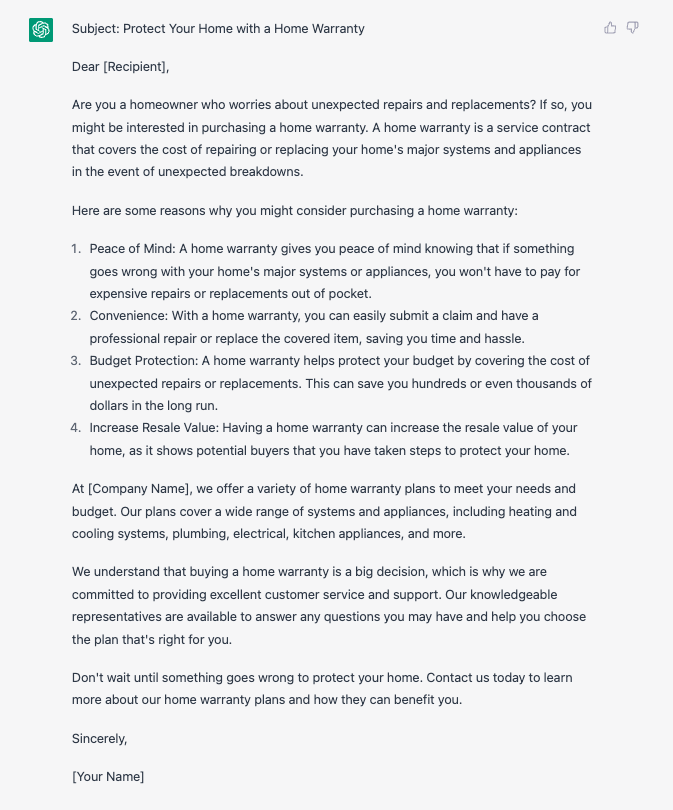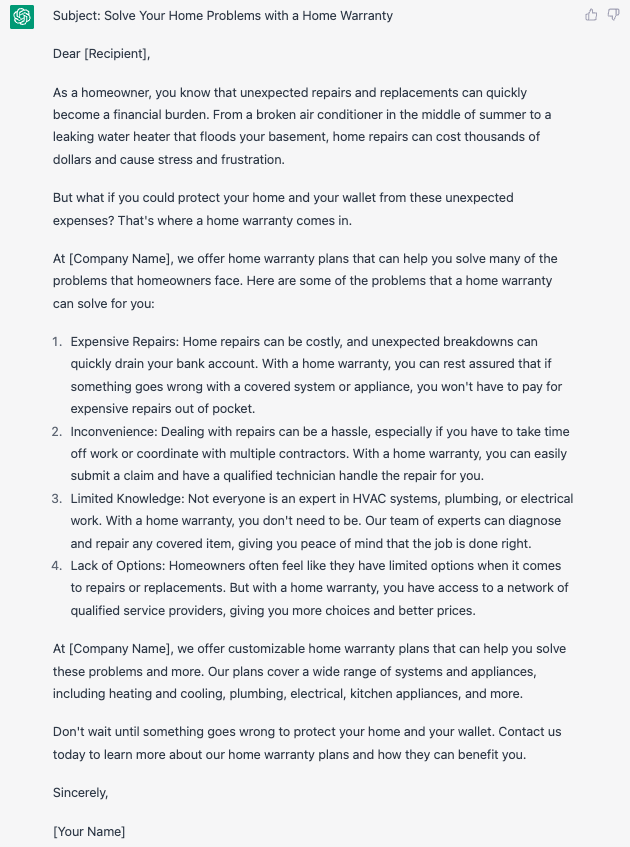3 Tips for Using AI to Create Marketing Content
I’m not usually one to make assumptions. There’s an old saying about what happens when you assume things (you make an a$$ out of you and me). But, I’m going to ignore that advice and assume that just about anyone reading this has now heard about Artificial Intelligence (AI) and how it is in the process of revolutionizing a wide variety of industries, including marketing and content creation. Even if you haven’t stuck your toe in the AI pool and started learning ways to use one tool or another to create marketing content, you’re likely aware of its growing popularity. And “growing popularity” is an understatement.
ChatGPT, the AI tool that people are going to be most familiar with due to quite a bit of media coverage, recently became the fastest app to reach 100 million users in history. The app was launched in November 2022 and surpassed the 100 million user mark in January 2023. The people using ChatGPT include everyone from curious consumers who just want to ask it random questions to content teams at companies that are using the platform to generate all the content for consumer-facing websites on a daily basis.
Amidst all the reports of AI producing content that is every bit as high-quality as a human being can create (and doing it much faster), it would be easy to assume that this new tool can start replacing marketers and content creators today. However, this brings us back to that old saying about making assumptions. You should think twice before replacing your marketing team with an AI chatbot tomorrow.
I have been using various AI tools, and ChatGPT in particular, to create a growing amount of content for a variety of marketing purposes for over a year. During that time, I learned a few lessons about where AI delivers the goods and where it still lags.
So, here are a few tips to take into consideration as you start working with AI to create content for your business in 2023.
1. Garbage in, Garbage Out
Since I’m on a roll with using old sayings today, here’s another one that applies to using AI tools for content creation. Basically, it boils down to the fact that what you get out of an AI tool is entirely reliant on what you put into it.
In the case of a tool like ChatGPT, this means that the quality of the output it delivers is driven directly by the prompts you put into the tool. If you want very specific content as a response to a request, you need to carefully describe what you are asking the chatbot to create. Simply asking the AI to “write an email that promotes buying a home warranty” will get you a fairly generic email like the image below.
Image 1

You can sharpen the results a bit by changing your prompt to ask ChatGPT to “write a promotional email focused on the problems that a home warranty will solve for homeowners”. This gets ChatGPT to focus more on problems and solutions.
Image 2

However, if you plan to use a common motivator like fear in your email marketing copy, ChatGPT may not deliver for you. If you ask it to ”write a promotional email for a home warranty company by citing worst-case scenarios to scare the recipient into making a purchase” this is a likely response.
Image 3

The point is to demonstrate that ChatGPT (and other AI tools) won’t necessarily deliver the output you want unless you ask for it fairly specifically. Even then, the tools have built-in limitations that may require you to rethink what you are requesting. I can imagine that rule against fear-inducing content on ChatGPT might be problematic for a Halloween marketing campaign.
2. Review and Proofread the AI-Generated Content
Even after you have honed your skills in writing effective prompts to get ChatGPT to deliver content that is in line with your needs, your job isn’t done. Just like any content written by a human being, AI-created content needs to be reviewed and proofread for a variety of issues. While obvious typos and misspelled words shouldn’t crop up, style, voice, and sentence structure are all areas to focus on in your review.
When it comes to writing about your company, product, or service, that review becomes even more important. Certainly, ChatGPT can’t know as much about your industry, company, and your value proposition to your customers as you do… right?
Here is a fun exercise. Ask ChatGPT to discuss the main benefits of your company for your customers. Other than your company name, don’t give it any more information. You might be surprised when ChatGPT uses content from your company website to answer your question.
Some marketers might just realize they can take a shortcut like this, create some content and fire off their next email marketing campaign with minimal effort. But, as successful marketers, we know better. Just because the tool can scrape your site and paraphrase your already published value props doesn’t mean it will do a good job or focus on the things your customers find most important.
So, whatever content you ask ChatGPT to create needs to be reviewed closely and likely edited to create a final version that can be used in an upcoming marketing campaign.
Quick side note. If it freaks you out that an AI chatbot can write what might be competent marketing copy about your company, product, or service, don’t immediately worry that it is going to replace you. Remember, all it’s doing is looking at what you or some other member of your company’s marketing team already wrote and paraphrasing it back to you. If you had not already created that content, ChatGPT wouldn’t have an easy way to write any unique or relevant value props. Try asking it to write about the benefits of a non-existent company name you make up and you might feel a bit better.
Image 4

3. Just the Facts
There’s one more vital tip when it comes to AI-generated content. If you ask the tool to write content that includes facts or data that you did not provide, do not immediately accept those facts to be accurate.
There was another AI tool I was testing in 2022 (which shall remain nameless) that on several occasions seemed to either completely make up a statistic or was clearly sourcing the information from someplace with inaccurate data. My initial thought upon seeing data I did not provide appear in the AI-generated content was “Wow! It searched the internet and found the data to include.” While that may very well be what it was doing, it was also definitely not including accurate information. Fortunately, when I fact-checked the data, I quickly discovered that it was completely incorrect.
I like to remind myself that these tools are using data from the internet to answer questions and, as we all know, if it’s on the internet, it must be true. LOL! Remember that, at least for now, chatbots aren’t actually ‘intelligent’. They are very good at searching for and then paraphrasing information designed to respond to your prompts incredibly quickly. But, they lack the ability to use old-fashioned human common sense to eyeball a piece of information and have a sense that it may or may not be factual. Just ask ChatGPT.
Image 5

While I have found ChatGPT to be more reliable when it comes to answering questions about specific data points, I will always take it with a grain of salt, until I can independently verify the accuracy of the information. This is actually one of the more worrying aspects of AI tools. That people could come to assume the answers are always accurate, even when the AI did not use a reliable source for the data.
4. Bonus Tip - Start Testing Now
My last tip is pretty straightforward. If you haven’t started testing AI tools like ChatGPT, get started now. Whether you are comfortable with the idea of an AI writing content that looks like it came from a human being or not - the AI content generation revolution has officially started. As with any emerging technology, those who learn to leverage new tools and technologies are going to be best positioned to take advantage of them… and not be immediately replaced by robots.
 Photo by Possessed Photography on Unsplash
Photo by Possessed Photography on Unsplash

 How to resolve AdBlock issue?
How to resolve AdBlock issue? 
 Tom Wozniak is the head of Marketing and PR for OPTIZMO Technologies, delivering the industry’s most powerful platform for email compliance and suppression list management to clients throughout the U.S. and around the world.
Tom Wozniak is the head of Marketing and PR for OPTIZMO Technologies, delivering the industry’s most powerful platform for email compliance and suppression list management to clients throughout the U.S. and around the world.